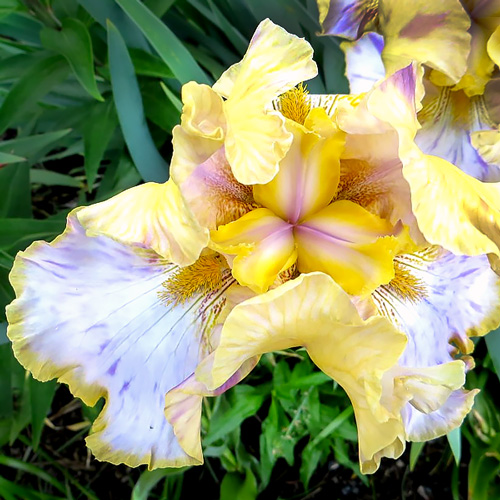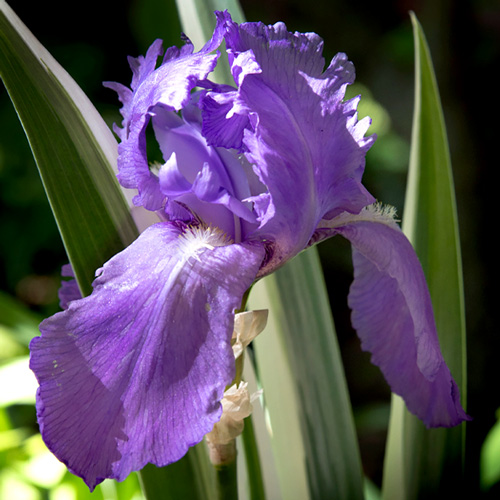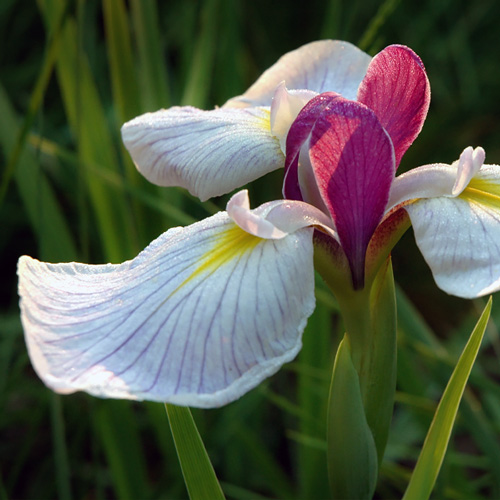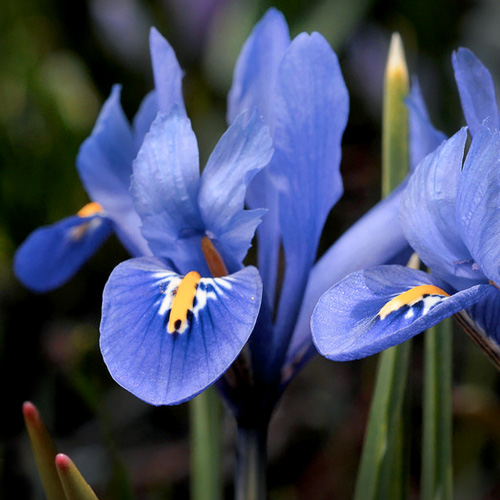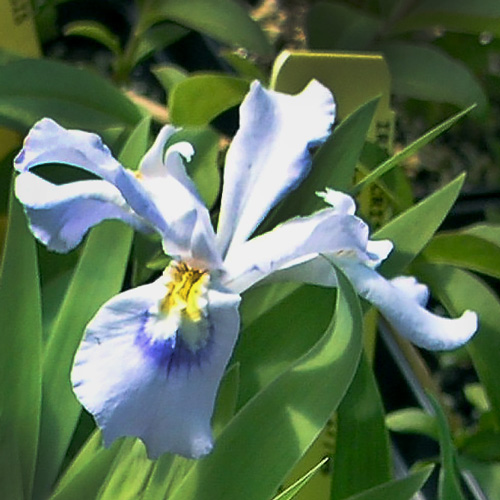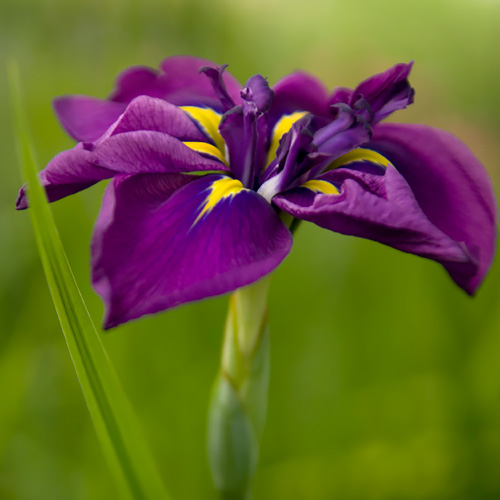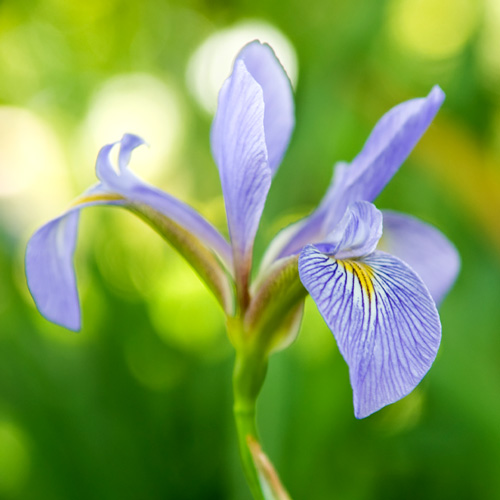

Plant Profiles
Iris
Iris spp.
In Greek mythology, Iris is the Goddess of the Rainbow. She’s a messenger from the gods to mortals—a golden-winged goddess who travels to earth on a rainbow. When she arrives, colorful flowering plants—irises—sprout where her feet touch the ground. The genus Iris is a fitting name for a group of fabulous plants whose flowers represent a rainbow of hues.
There are about 300 iris species and thousands of cultivars. Their native habitat ranges from North America, Europe, Africa, and Asia where some grow on mountain tops, in meadows, deserts, alongside streams, and on hillsides. Depending on the species, they range in height from a few inches tall to several feet.
Flowers
Iris blossoms are represented in emblems, such as the ‘fleur de lis’ of French kings, and on many flags. Irises appear in paintings by Vincent van Gogh, Claude Monet, and countless other modern artists. One of the oldest depictions of the plants are at the Palace of Minos at Knossos on Crete, painted nearly 4,000 years ago.
The flowers are easy to recognize. They have three upright petals called “standards” and three downward-facing sepals called “falls.” Flowers may be less than an inch wide to more than 7 inches across. Bloom time depends on the variety with some plants flowering in March and April and others blooming from May through mid-June.
Popular Types
In Your Garden
Most irises perform well in good garden soil. Some, such as blue flag and Japanese iris, need consistent moisture. Rich, neutral, or slightly alkaline soil is recommended for tall bearded irises.
Soil
Irises benefit from fertilizing twice during the growing season. For existing plants, the first application of all-purpose fertilizer is about six to eight weeks prior to flowering, which for much of Illinois is between mid-March and mid-April. The second application is after transplanting or, for any existing clumps not being dug, in mid-summer.
Like many other perennials, irises benefit from dividing every three to five years. Otherwise, clumps become crowded and flowering diminishes. Clumps of Siberian iris may produce a “doughnut hole”—the inside of the clump is bare soil and the leaves form a circle around it.
All rhizomatous iris species, such as the common bearded, beardless Siberian and Japanese iris, can be divided when they’re finished blooming up to late August. The rhizome is modified stem tissue that grows best at or just below the soil surface. Before dividing, cut the leaves to one-third of the plant's height. Use pruning shears, a saw or an old bread knife to cut away individual new rhizomes from the mother rhizome, which should be discarded.
Replanting
Dig up the plant and replant young rhizomes that grow off older stems, leaving the foliage intact. Healthy rhizomes should be 5 to 7 inches long, with at least one good fan of leaves and two or more buds. Dig a hole 5 inches deep and place the rhizome on a small mound of soil with the roots pointing down. Cover with soil, allowing the rhizome to be slightly exposed so it does not rot.
When the plants have finished blooming, iris foliage—with its slender, spiky leaves—adds great texture to the garden. Siberian irises form graceful fountains of grass-like foliage that remain green and healthy until autumn.
Pests
Irises are susceptible to some pests, such as iris borer, and yellow flag iris (Iris pseudacorus) should not be planted as it is an invasive. Learn more about perennial gardening. Discover where to see the Garden’s many Iris cultivars.


